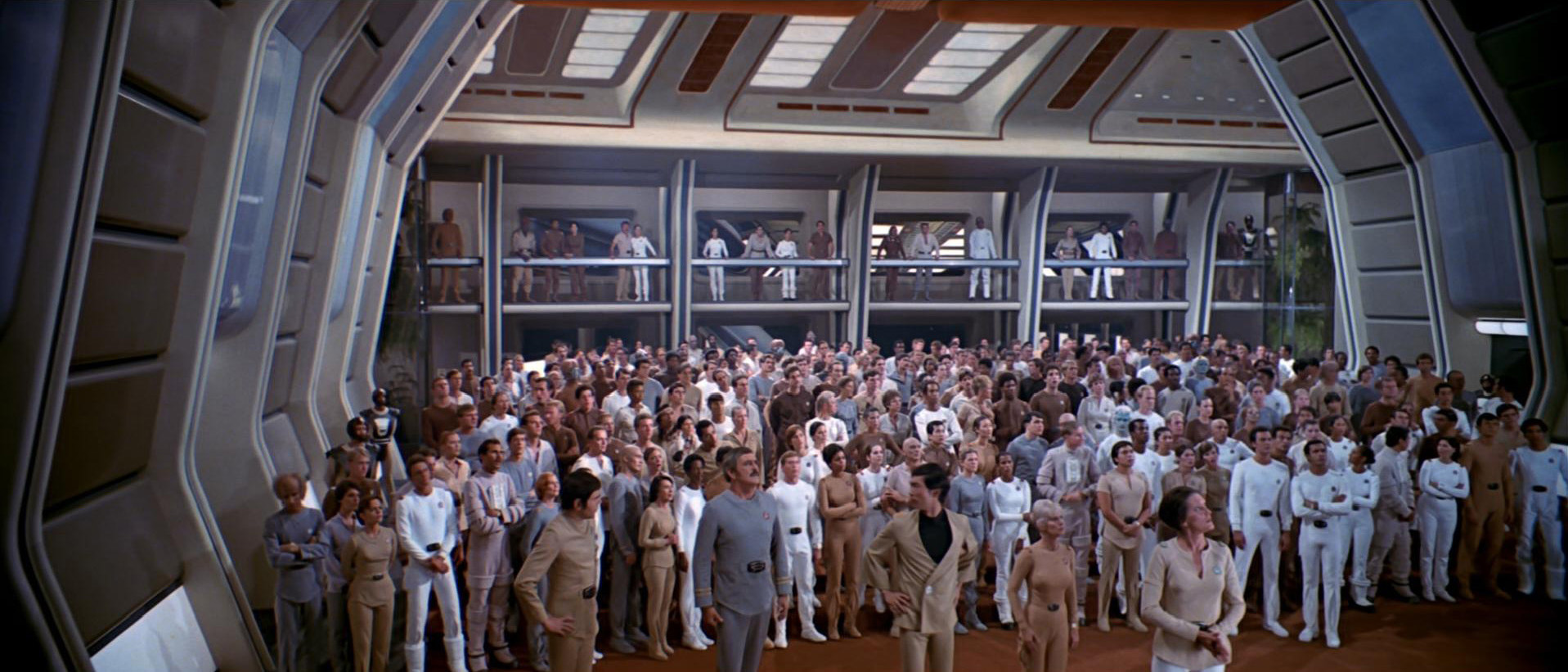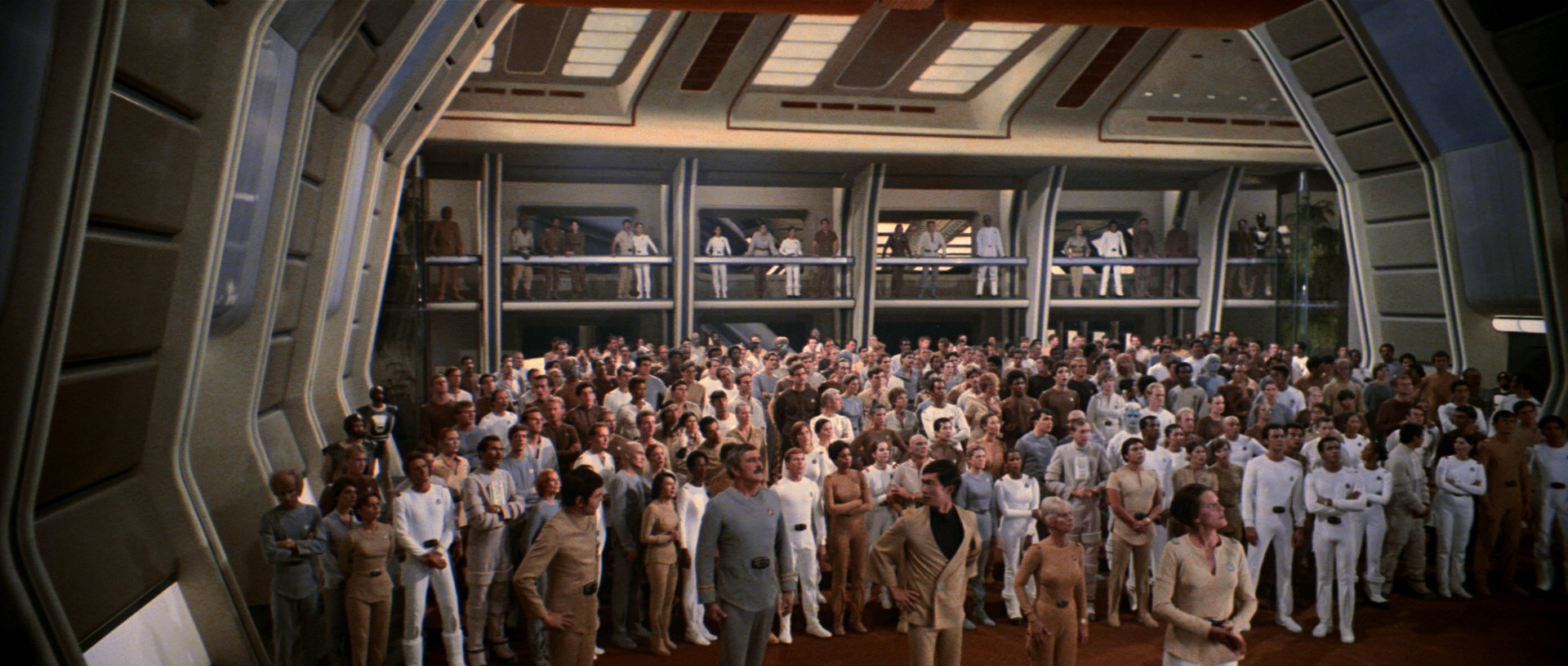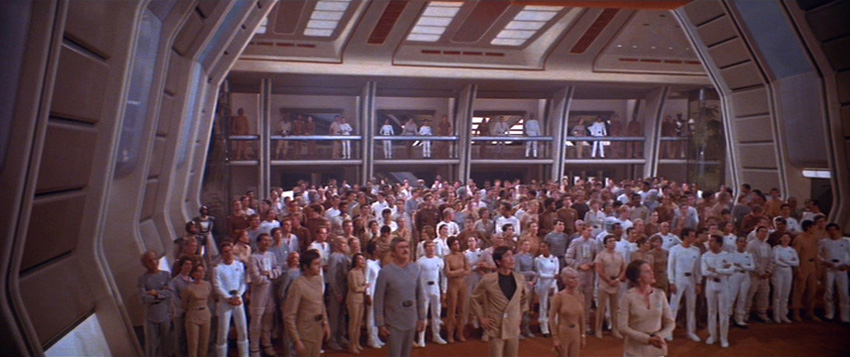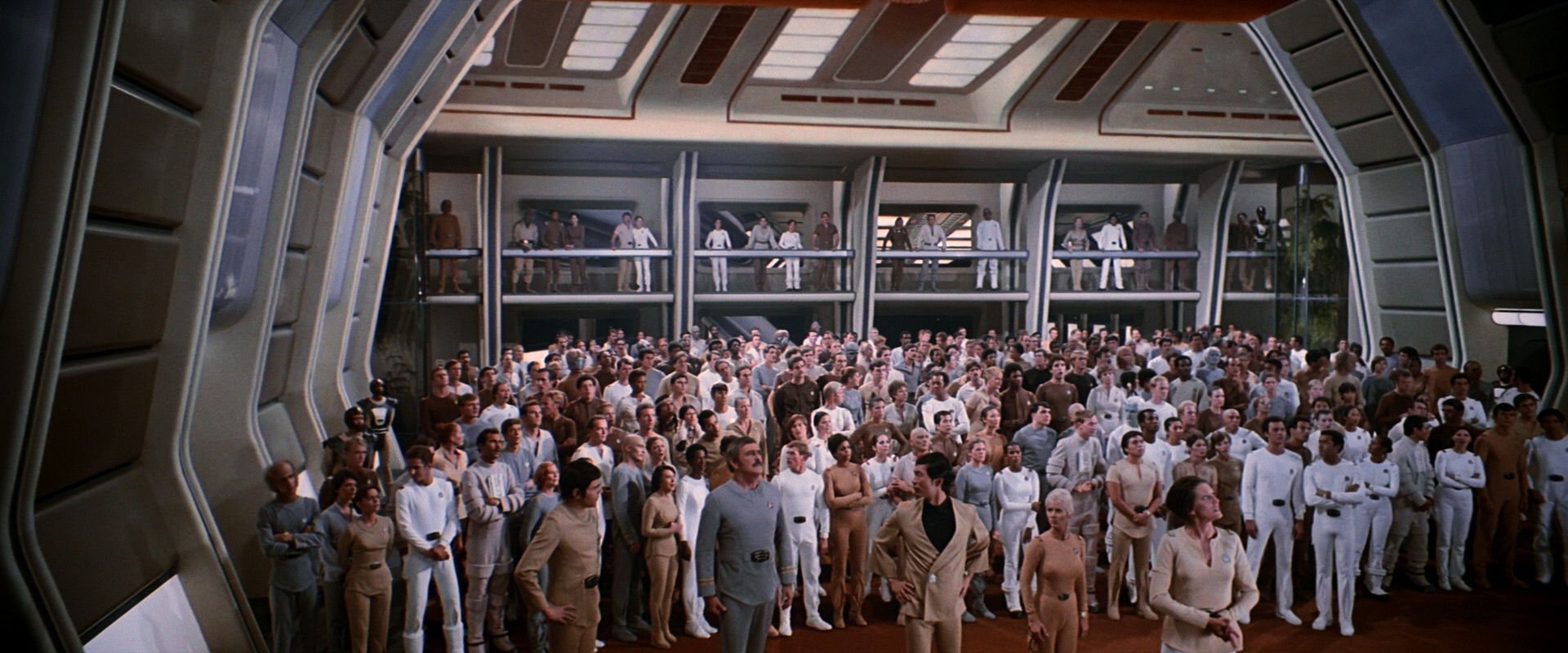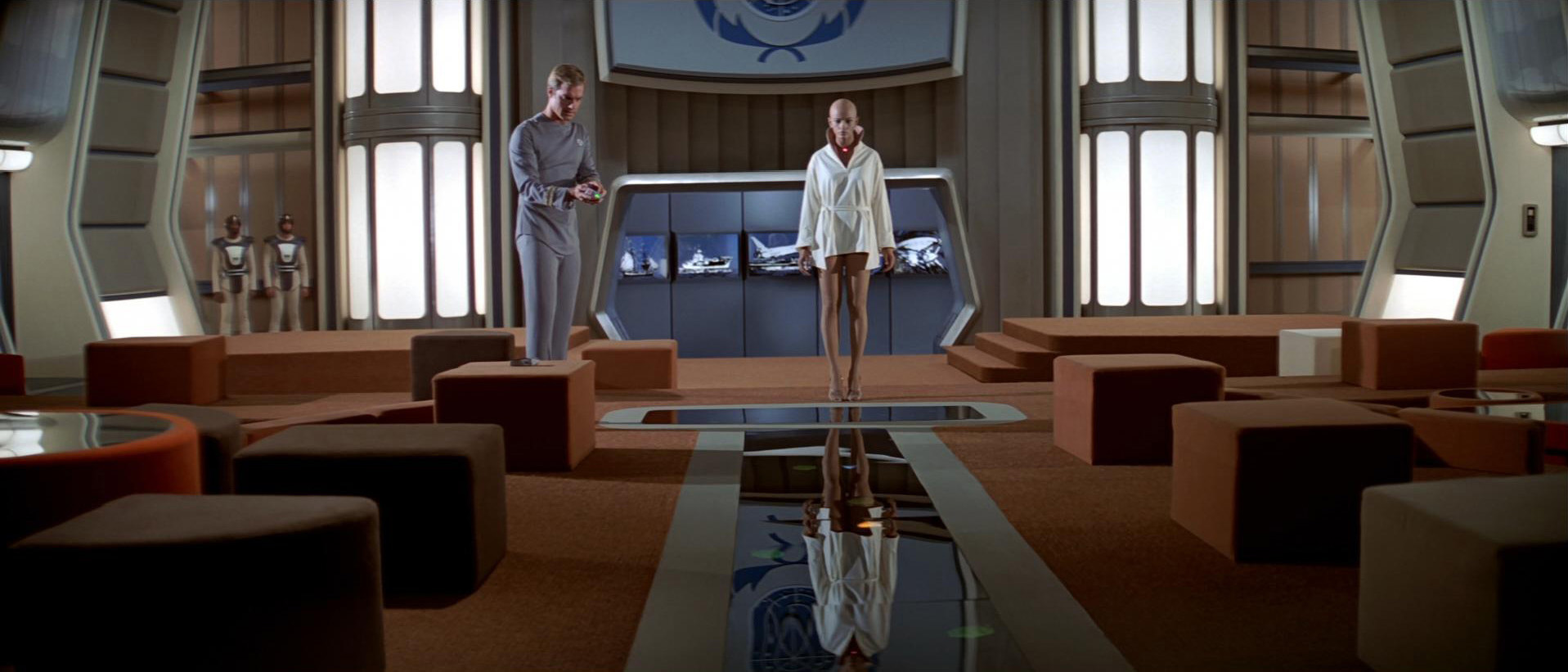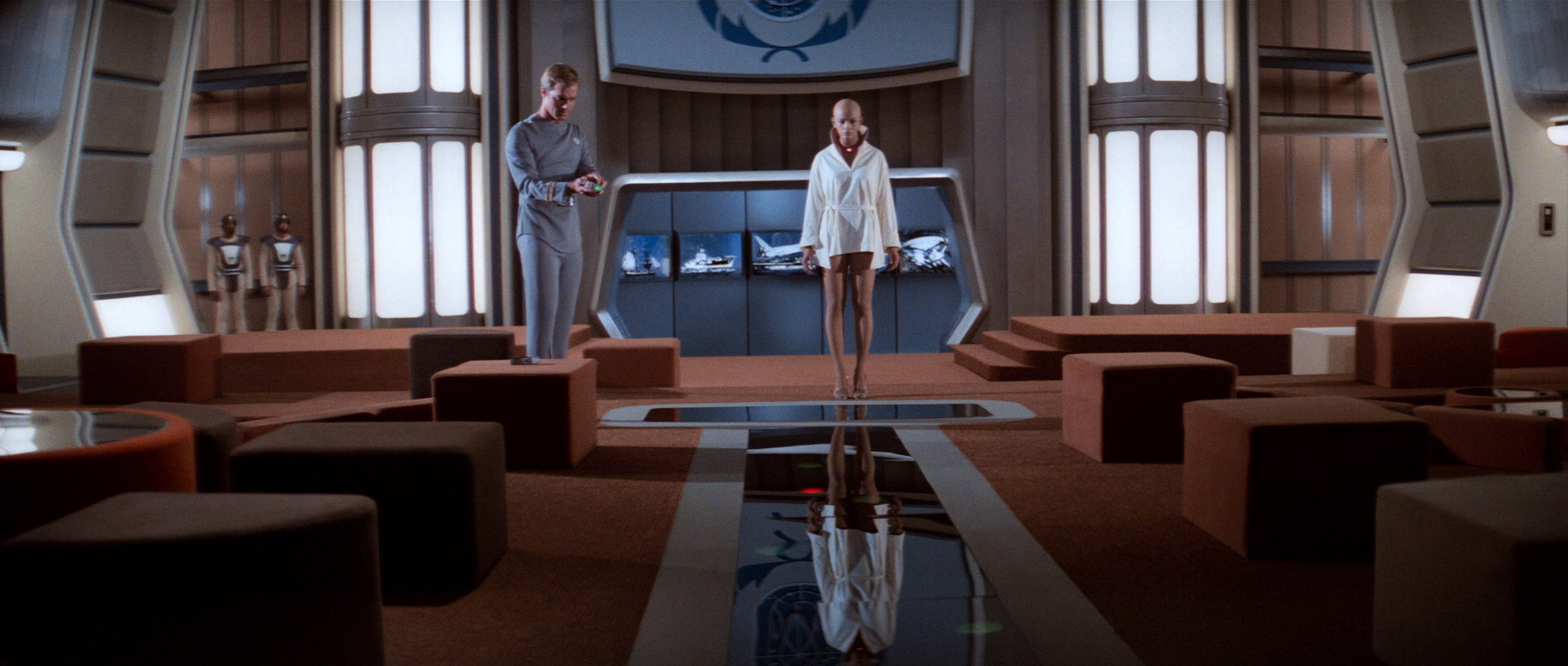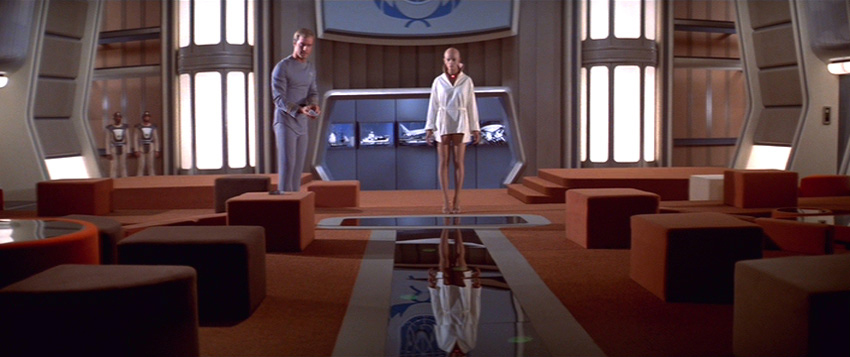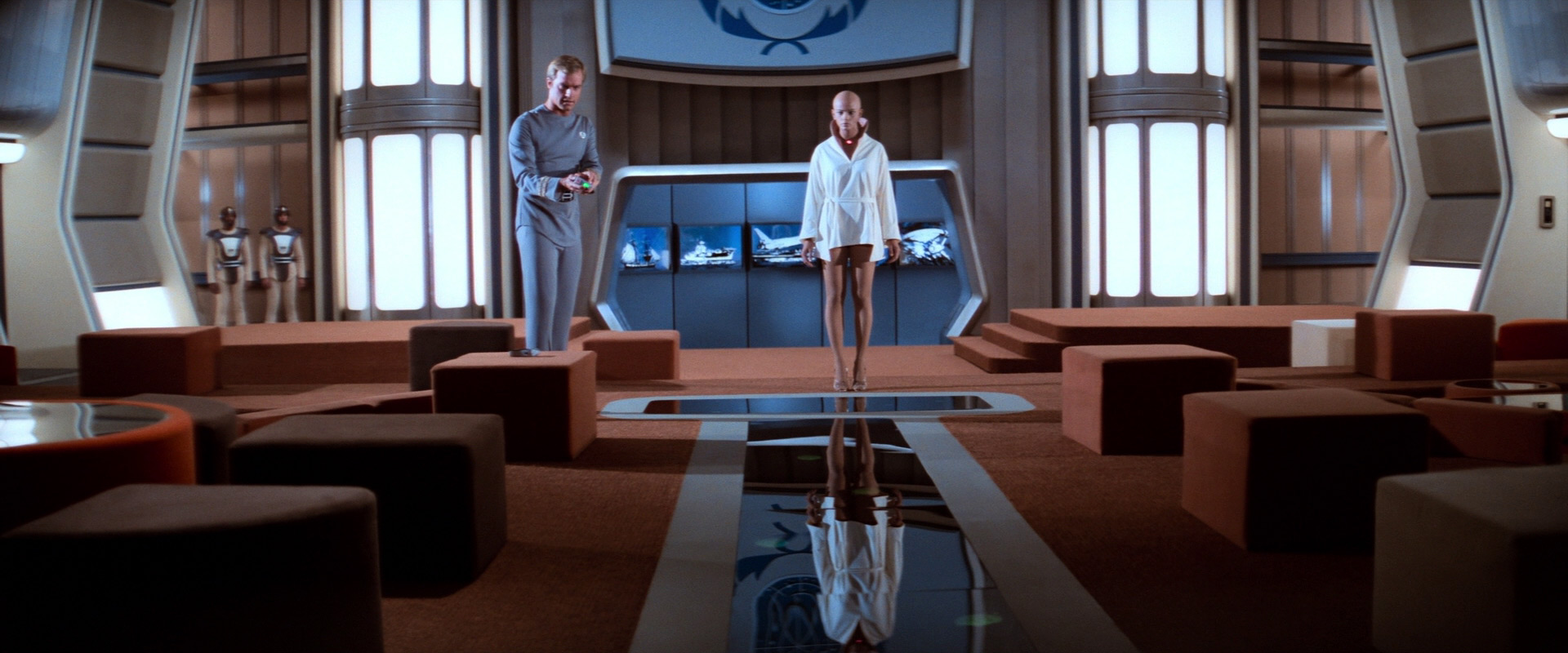Designing The Motion Picture’s Recreation Deck
The recreation deck of Star Trek: The Motion Picture grew out of Director Robert Wise’s desire to show the scale of the new Enterprise.
“When I came on the show, I saw a number of the old episodes,” he told Cinefantastique in late 1979, “and I was struck with the fact that they were always talking about having a crew of 460 or something, but all you ever saw were the main characters and a few extras walking around the back. They didn’t have any scope.”
So I felt it was very important that there be one place in the picture where we would have a big rec room and see a good part of the 400 people in one group, so we illustrate the size of the Enterprise and that it’s manned by all these people.

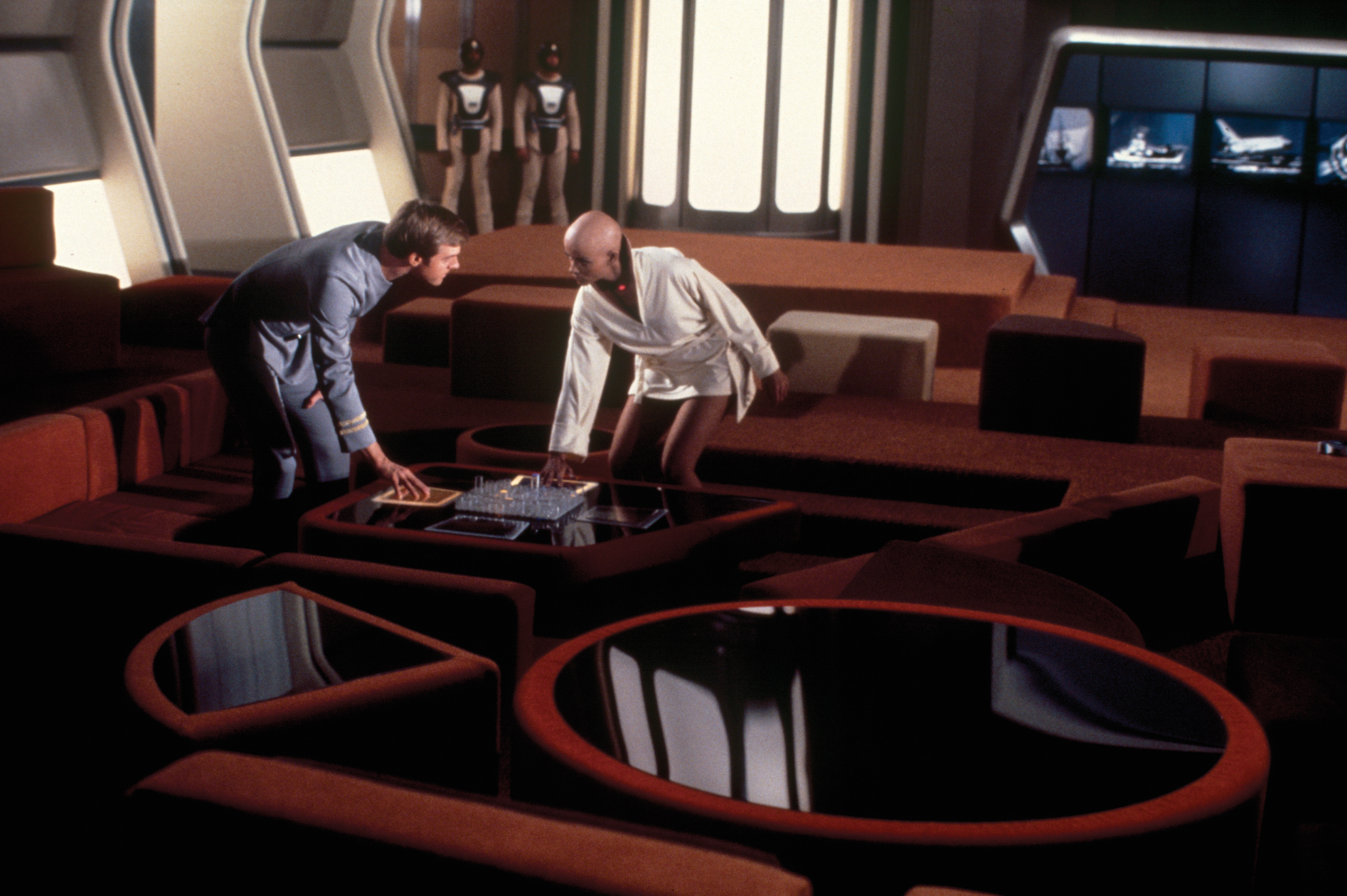
The question for the design team was where on the ship this reaction deck could be.
Illustrator Andrew Probert’s suggestion was to put it below the officers’ lounge. He submitted a concept art that showed how Spock’s arrival could be dramatized by observing his shuttle through the enormous windows of such a new facility.
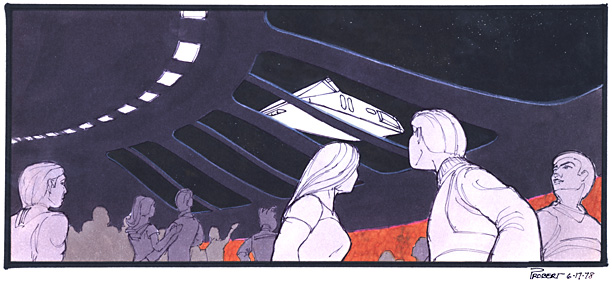
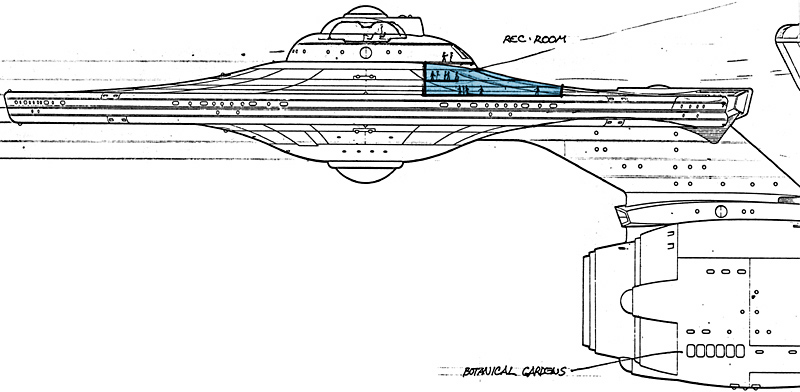
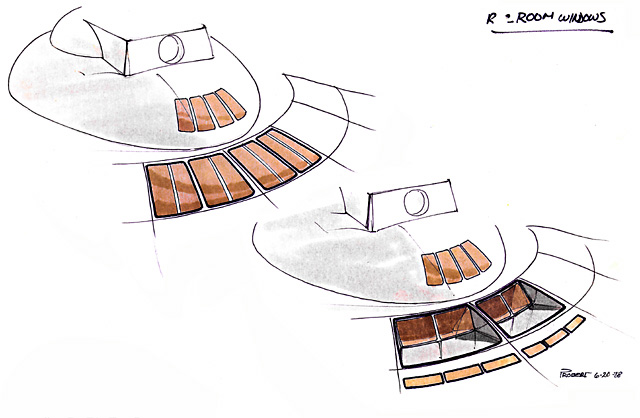
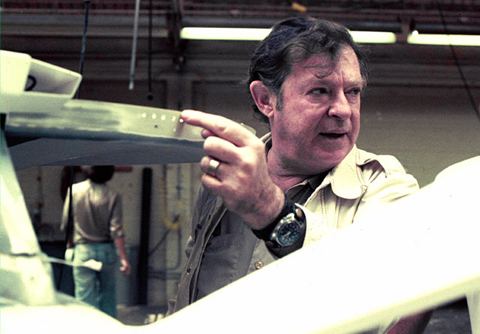
Today such a scene would be shot on a blue-screen stage. At the time, Production Designer Harold Michelson’s problem was that he couldn’t possibly get glass in the required size to build that set.
He proposed to put the recreation deck in the back of the saucer section, next to the impulse engines. There were already windows on the model there, and Michelson felt he could build the right set for it.
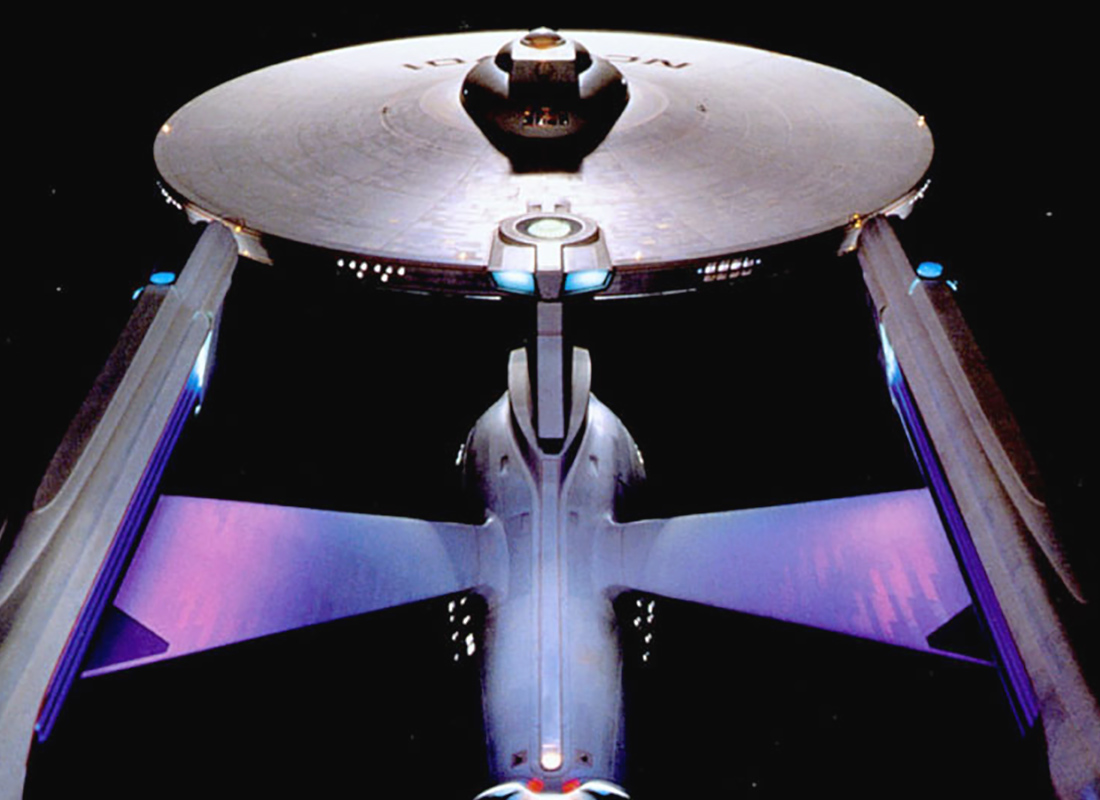
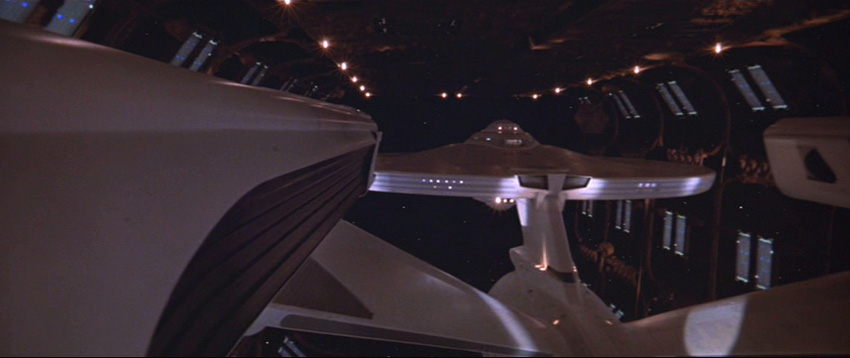
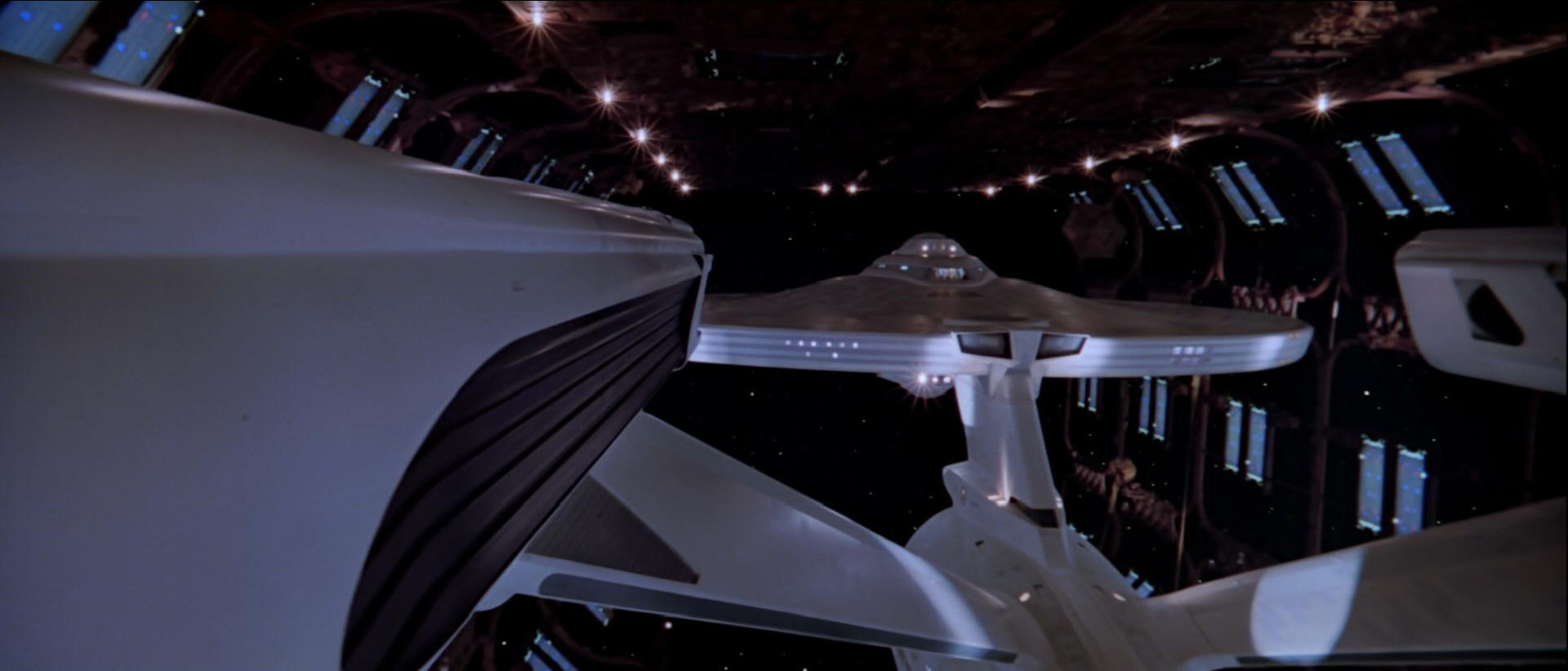
Probert saw a problem, though: the saucer curves downward at the edges. He submitted a concept art for a terraced recreation room that would both maintain visual continuity and make the scene more interesting.
But Michelson rejected this as too complicated. Probert remembered him saying: “No one goes to a movie with a slide rule in his hand.”
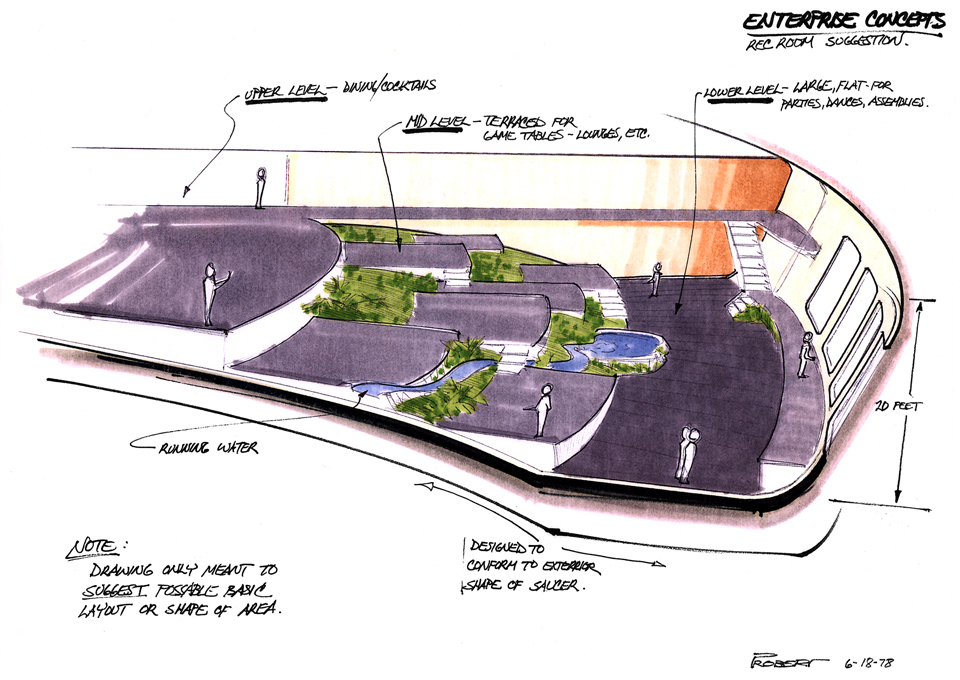
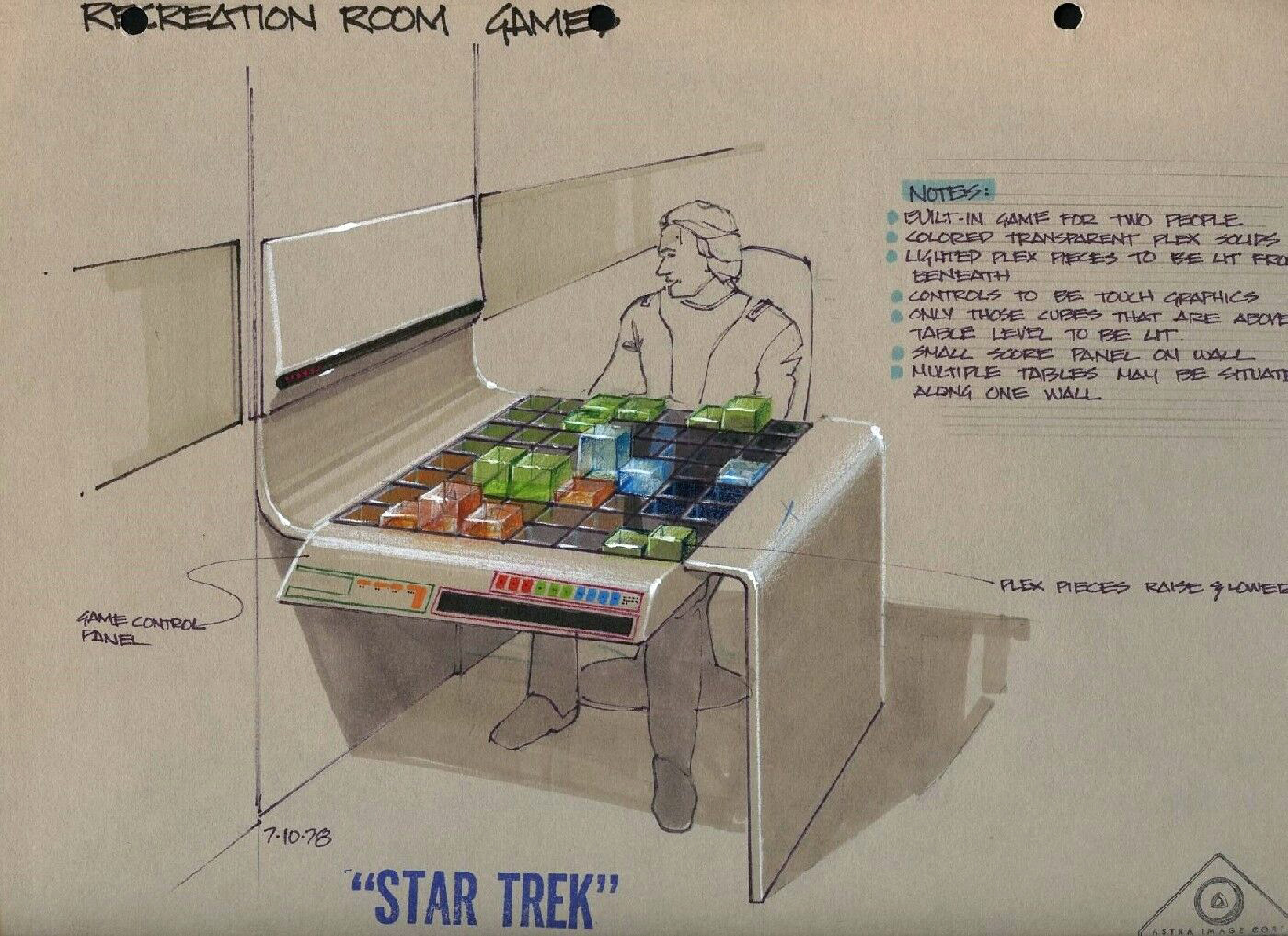

Michelson defended his decision in an interview with Starlog in January 1980, arguing that there was a danger in being too logical about designing sets.
“We were bamboozled by technical advisors, people from NASA and other scientists,” he said. Michelson felt they were apt to lose sight of the drama in their insistence on accuracy.
And there was always a time element — no way we could do everything anybody might want us to do.
